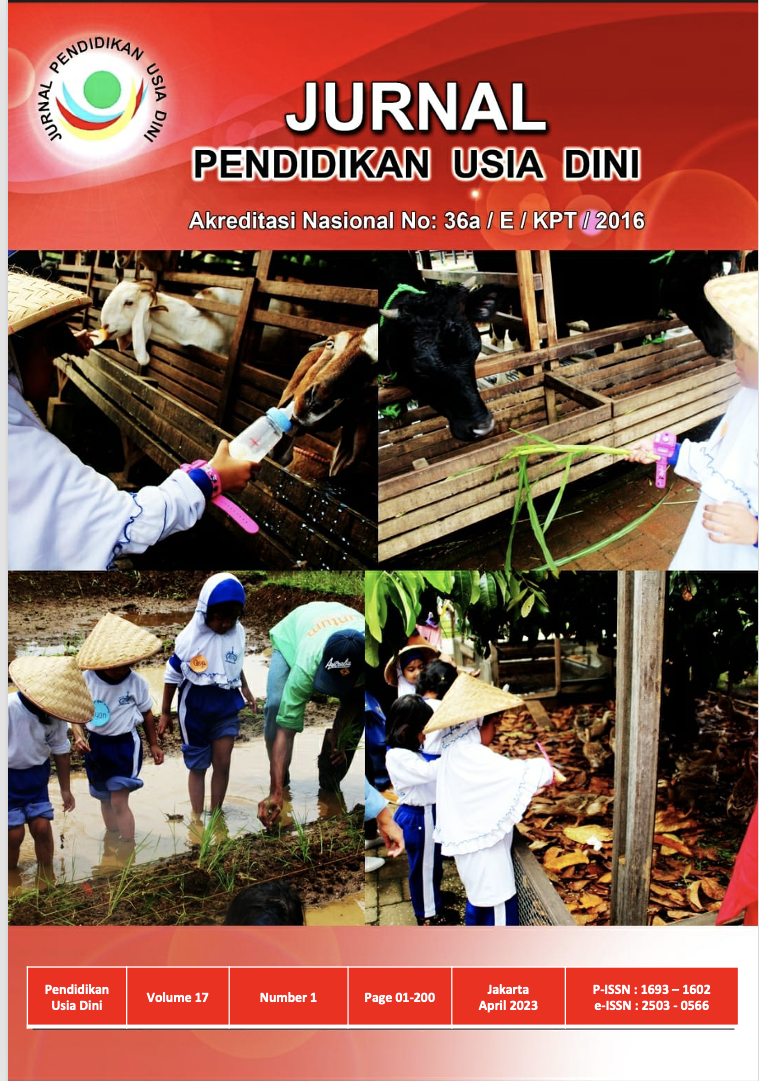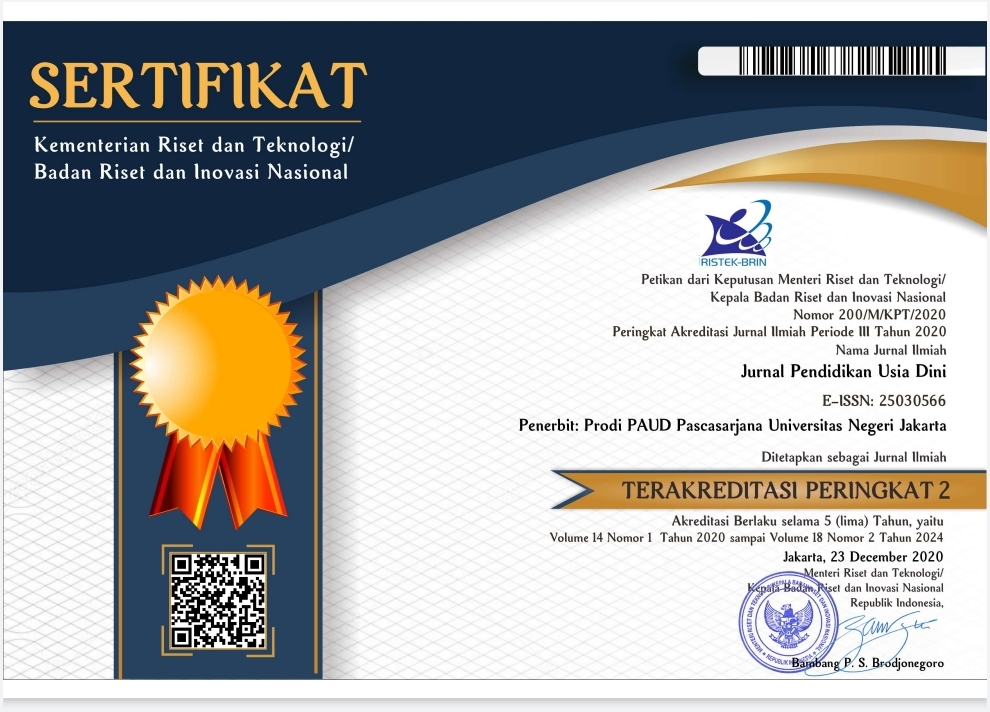ECE Music Courses in Higher Education: Rhythmic Learning Based on Local Culture Through the Solfeggio Technique
DOI:
https://doi.org/10.21009/JPUD.171.10Abstract
The lack of learning techniques used by teachers in teaching music in early childhood, especially rhythmic learning, in general teachers only teach rhythm by explaining the value of notes, not using singing, and not connecting it with singing. The purpose of this research is to describe the effectiveness of rhythmic learning using cultural-based solfeggio techniques through lecture assignments. The research method used is descriptive qualitative with an emphasis on exploration. Data collection was taken from the results of the learning value of the rhythmic ensemble which lasted for four meetings. The results showed that of the eighteen students who attended the Culture-Based Arts Education course, when it came to Rhythmic Ensemble, fifteen of them got an A and only one got an A-. All of them can read notes and show them through body rhythmics while singing folk songs. Therefore, it can be recommended that early childhood teachers for music learning, especially in discussing the value of notes/rhythmic learning, use the solfeggio technique using folk songs to introduce local culture from an early age.
Keywords: ECE program student, rhythmic learning, local culture, solfeggio technique
References:
Banoe, P. (2003). Kamus musik. Kanisius.
Bronson, M. B. (1995). The right stuff for children birth to 8: Selecting play materials to support development. Natl Assn for the Education.
Burak, S. (2019). Self-efficacy of pre-school and primary school pre-service teachers in musical ability and music teaching. International Journal of Music Education, 37(2), 257–271. https://doi.org/10.1177/0255761419833083
Carrillo, C., Baguley, M., & Vilar, M. (2015). The Influence of Professional Identity on Teaching Practice: Experiences of Four Music Educators. International Journal of Music Education, 33(4), 451–462. https://doi.org/10.1177/0255761415582348
Duţică, L. (2018). Assessment Typologies Used Within the Discipline Theory, Solfeggio, Musical Dictation. Review of Artistic Education, 15(1), 37–43. https://doi.org/doi:10.2478/rae-2018-0004
Eyles, A.-M. (2018). Teachers’ Perspectives about Implementing ICT in Music Education. Australian Journal of Teacher Education, 43(5), 110–131. https://doi.org/10.14221/ajte.2018v43n5.8
Hamilton, A. (2007). Music and the Aural Arts. The British Journal of Aesthetics, 47(1), 46–63. https://doi.org/10.1093/aesthj/ayl038
Ismail, M. J., Fung Chiat, L., & Anuar, A. F. (2021). Learning Music Through Rhythmic Movements in Malaysia. Malaysian Journal of Learning and Instruction, 18(Number 1), 241–263. https://doi.org/10.32890/mjli2021.18.1.10
Jing, W., & Danprdit, P. (2022). Piano Rhythmic Exercise for Preschool Education Major Teaching at Taiyuan Teacher College. Journal of Green Learning, 2(2), 100–105. https://doi.org/10.53889/jgl.v2i2.120
Kim, H., Sefcik, J. S., & Bradway, C. (2017). Characteristics of Qualitative Descriptive Studies: A Systematic Review. Research in Nursing & Health, 40(1), 23–42. https://doi.org/10.1002/nur.21768
Kiraly, Z. (2003). Solfeggio 1: A Vertical Ear Training Instruction Assisted by the Computer. International Journal of Music Education, os-40(1), 41–58. https://doi.org/10.1177/025576140304000105
Lubkov, A. V. (2020). Modern Problems of Pedagogical Education. The Education and Science Journal., 22(3). https://doi.org/10.17853/1994-5639-2020-3-36-54
Mohedo, M. T. D., & Bújez, A. V. (2012). Improving Learning in a Professional Context: A Research Perspective on the New Music Teacher. Procedia - Social and Behavioral Sciences, 69, 579–584. https://doi.org/10.1016/j.sbspro.2012.11.449
Niland, A. (2009). The Power of Musical Play: The Value of Play-Based, Child-Centered Curriculum in Early Childhood Music Education. General Music Today, 23(1), 17–21. https://doi.org/10.1177/1048371309335625
Wang, L. (2022). The Skill Training of Reading Music in the Teaching of Solfeggio and Ear Training in the New Media Environment. Applied Bionics and Biomechanics, 2022, 1–11. https://doi.org/10.1155/2022/8209861
Zhang, W. (2022). Practice and Exploration of Music Solfeggio Teaching Based on Data Mining Technology. Journal of Environmental and Public Health, 2022, 5436772. https://doi.org/10.1155/2022/5436772
Downloads
Published
How to Cite
Issue
Section
License
JURNAL PENDIDIKAN USIA DINI work is licensed under a Creative Commons Attribution 4.0 International License. (http://creativecommons.org/licenses/by/4.0/)





